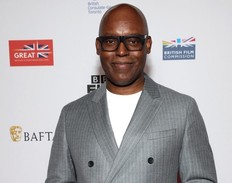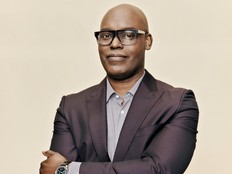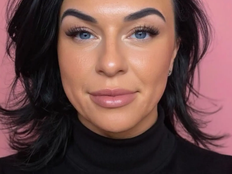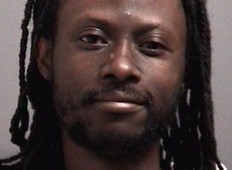What it feels like: Having a stroke at 24 helps you 'realize how precious life is'
Raben Dommann has learned that in some cases, age has nothing to do with what can happen to a person

Article content
Raben Dommann is a healthy, 24-year-old Team Canada swimmer, specifically a backstroker. One day, as he was preparing for his regular training session in the pool, watching technique videos, he felt a weakness in his right leg and started to feel lightheaded. When he tried to get up from his seat to walk, he realized that something was going on because he couldn’t take steps in the same way, and the confusion set in.
“In the moment, I would have just neglected it and written it off and probably thought, ‘Oh, my leg, something weird happened with my leg,’ and I’d move on,” he said. “But I had a lot of people telling me to follow up with it, so I went to the hospital.”
Recommended Videos
After Raben went to the hospital for the event, he got news that most 24-year-olds would never expect to hear: he had an ischemic stroke, a type of stroke that occurs when blood flow to the brain is blocked or reduced.
He’s not the only young person to have a stroke. According to new data released by the Heart & Stroke Foundation, roughly one in every 20 strokes in Canada occurs in people below the age of 45.
Prior to having the stroke, Raben spent roughly 30 hours a week training, swimming twice a day and working out in the gym. Between his training activities for Team Canada, he would take classes, partake in professional internships, and travel for his swimming. He was active and staying busy, leading a life that consisted of doing it all.
Because he was in peak physical condition, there were no known risk factors for Raben to consider when he had his stroke—until they found the most probable cause, a patent foramen ovale (PFO), or small hole in the heart, to be the likely culprit.
Heart health is strongly linked to stroke, but many young people can be unaware of issues within their hearts, just like Raben. Checking for heart disease or other issues is often reserved for older adults or those who have symptoms they cannot ignore.
Losing a part of his identity
Raben’s entire life was dedicated to living his best while doing the things he loved, such as swimming. After the stroke, Raben had to contend with the consequences of the event, which became tough for someone so driven.
“It’s a big part of my identity, and for a bit, it was like, ‘Am I even going to be able to walk again?’ So, that’s a scary thought process to be going through,” he said. “Then when I recovered, and you kind of work through that part and then it’s like, ‘Okay, well, what is my life going to look like now?’ I’ve put so much into swimming, and it means a lot to me, so now, am I going to be able to swim again? Or am I even going to be able to exercise?”
Raben grappled with these questions while he went through various therapies to help him come back from the stroke, and the thought of not being able to continue with what he’s dedicated his life to weighed heavily on him.
“Answers don’t come overnight, and it’s the hardest part not knowing exactly what’s going on. It drags on for weeks or sometimes months and (you) don’t have a clear picture, so I think it’s the unknown that’s kind of scary.”
Luckily for Raben, his body bounced back relatively quickly. He still is in the midst of his recovery, but the stroke itself “didn’t have any lasting effects.”
“I think that is very lucky, so I try to be grateful as well, but it can be hard sometimes.,” he said.
Raben is one of the lucky ones, but the data from the new Heart and Stroke report has found that more and more people are surviving strokes just like him, leading to almost one million Canadians living after a stroke event.
Recovering after a stroke and heart surgery
Following his stroke, Raben had to participate in a routine of recovery so that he could restore himself back to good health. He counts himself lucky, though, as “people do a lot more when it comes to strokes” than he had to.
“I did a little bit of physio for just my leg,” he said. “More in a ‘Let’s make sure it’s okay’ kind of sense and less ‘Let’s build it back up’ because I recovered pretty quickly. Within a few days, I was back to what I would consider 100 per cent. Maybe medically, not 100 per cent, but about normal.”
The following weeks, his therapies revolved around making sure that everything was okay, realizing that he narrowly avoided the risks and repercussions of a stroke that many others have to contend with.
Even though Raben was making good progress in his after-stroke therapy, the main issue that his team of doctors wanted to address was the PFO. In the time between his stroke and when his surgery was scheduled, Raben was able to perform light activity but for far less time and at a scaled-back intensity than he was used to.
The goal was to ensure that he was still getting some movement in to keep his overall health as optimal as possible while he spent time recovering and waiting for his surgery.
After the PFO closure came and went, Raben now has to deal with a new regimen of recovery, which also involves much less movement, as recommended by his doctors.
“I’m being cautious and making sure that it heals okay,” he said. “We just don’t want to have any lasting impacts from it that might cause more problems.”
Finding the silver lining
Raben’s life changed dramatically in just a few moments when he had his stroke, and while it led to changes that he wouldn’t otherwise want to experience, he managed to find ways to stay positive in light of his situation.
He’s decided to indulge in the things that he didn’t have time for prior to his health scares because he was incredibly busy building his athletic and professional careers, as well as furthering his education.
He mentions that his old schedule kept him from enjoying his passions, including reading, going for walks on nice days, and playing golf (when his doctors give him the go-ahead). But one big thing that’s changed for Raben is his ability to spend more time with the people he loves most: his family.
“My usual schedule during the week, I won’t have time to see family because I’ve got to be in bed early, and I’m up early, and I’ve got classes and all that stuff. (Now), during the week, maybe on a Wednesday, I can go visit my sister, my parents or my brother. I just have time to fit these extra things in.”
The experience has also allowed Raben to slow down and take stock of his time and how he wants to spend it.
“It just makes you appreciate everything a bit more,” he said. “In hindsight, I think I thought I was invincible at the time. I wasn’t consciously thinking that, but then suddenly, you’re kind of shaken up and you realize that anything can happen to anyone, so it’s just being grateful for the time that we have and make sure we’re being very intentional about how we spend it.”
Since he is so young, Raben has learned that in some cases, age has nothing to do with what can happen to a person. And he hopes to share the message that being young doesn’t always protect you against harmful events such as stroke. He doesn’t want people to be scared, but notes that if you’re young and experiencing something different within your body, it’s vital to pay attention.
“Don’t ignore signs that your body’s giving you that something might be wrong,” he said. “But also, if it does happen, you know it’s not the end. It’s kind of an opportunity to still use it for positive and use it to help you realize how precious life is.”










